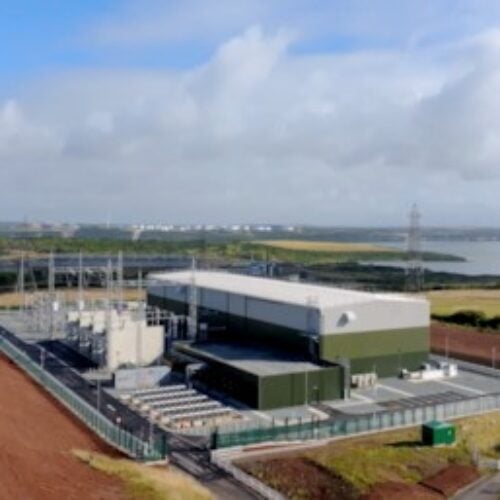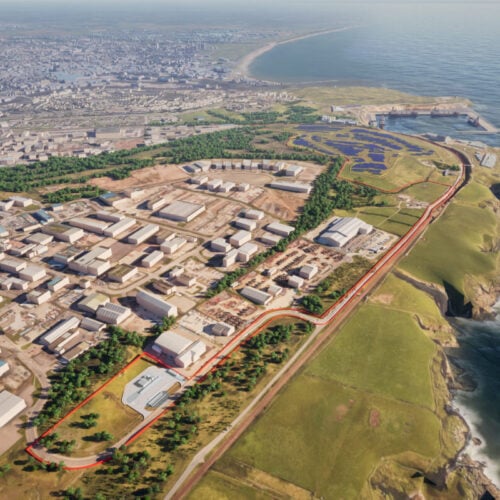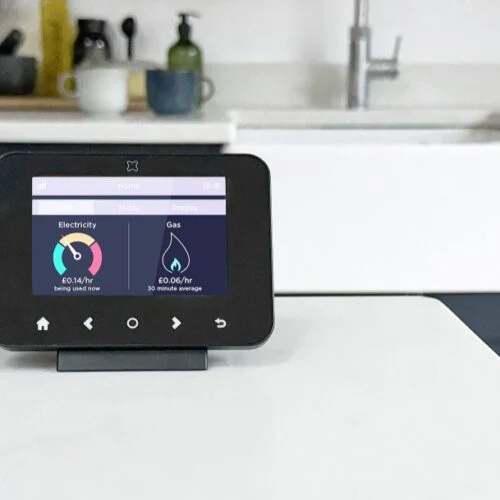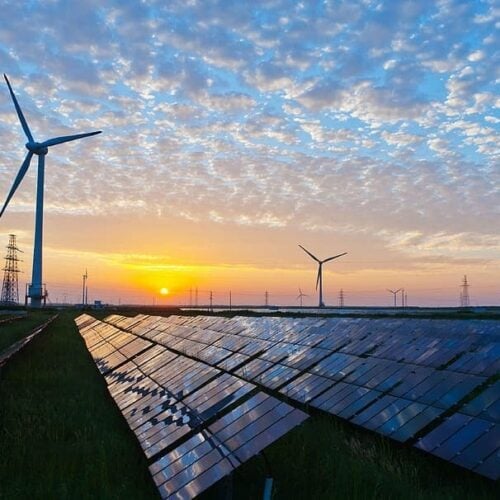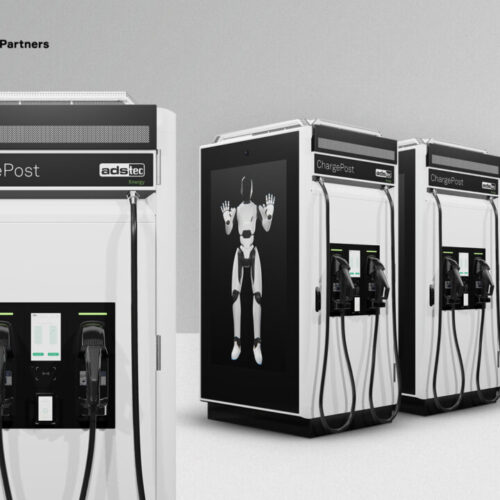The UK’s roads are becoming increasingly electrified; the latest data from New Automotive showed that electric vehicle (EV) sales experienced a 60% year-on-year increase, growing to make up 16% of the market.
This market share is set to rise as, according to the Society of Motor Manufacturers and Traders (SMMT), there were 1.1 million EVs on UK roads in April 2023, a figure that is since expected to have grown to 1.2 million.
As more drivers switch to electric travel, identifying and utilising the opportunities presented by having an increased number of ‘batteries on wheels’ on UK roads is the next step to ensuring a futureproof energy system.
The key to this – utilising the as-of-yet untapped potential vehicle-to-grid (V2G).
As the UK Government’s Zero Emission Vehicle (ZEV) mandate consultation draws to a close at 11:45pm today (24 May), Current± sat down with independent energy and mobility consultant, Claire Miller, to discuss how renewable technology integration can unlock a smarter energy system. Former director of technology and innovation at Octopus Electric Vehicles, Miller remains an Innovation Advisor for the company.
Batteries on wheels
V2G refers to the process of transferring energy from the battery of an EV back to the power grid.
Using EVs as de facto batteries would help provide balancing services by supplying energy to the grid during peak times when the driver doesn’t require the use of their EV.
“These amazing EVs have big batteries which make them available to work with the grid. That has the benefit of not only doing more with the grid that we have right now, but also allowing us to return some of those benefits to customers,” Miller says.
“So it’s really about joining the dots – integration – and I think there are many layers of integration here to think about. If we’re tying up materials and energy in these EVs, then doing the absolute most we can by them is very very important.”
The potential of V2G technology is becoming increasingly acknowledged in the industry.
In April this year, the Faraday Institution released a new report dubbed, The role of hydrogen and batteries in delivering net zero in the UK by 2050, which revealed that V2G technology could offer 445GWh of energy storage capacity by 2050.
Warnings of the consequences of failing to utilise V2G technology were sounded by the Energy and Climate Intelligence Unit (ECIU), who said that a slow rollout could cause a loss of £6.5 billion in energy bill savings.
But how far is the UK from the nationwide adoption of V2G technologies?
Some companies have begun rolling out consumer-facing V2G technology to jump-in early on the benefits of EV-enabled energy transfers and offer their customers the adjoining benefits.
One such example is in the partnership between Octopus Energy and National Grid ESO (ESO) which saw ESO send signals to Octopus notifying the energy supplier to charge or discharge a selection of EVs according to the needs of the Balance Mechanism.
Octopus found that customers using its Kraken Platform to help balance the system in real-time could save EV drivers as much as £840 annually.
OVO Energy ran a similar V2G trial in 2020, which saw EV drivers earn up to £725 from selling excess energy from their EV back to the grid at peak times.
Miller believes that the next step to the wide rollout of V2G technologies lies at the door of manufacturers.
“It’s in the hands of the manufacturers. There are now a broad range of manufacturers of these passenger vehicles that have intent to bring this technology to the market but right now they don’t necessarily have a specific incentive to do that,” says Miller.
“And I think they are also – particularly those manufacturers who are transitioning from internal combustion engine (ICE) vehicles to EVs – trying to understand, design and explore what a connected fleet of vehicles look like for them.”
One of the ways these incentives can be granted to manufacturers to promote the investment in V2G technologies is through the ZEV mandate.
The ZEV mandate aims to reduce the greenhouse gas emissions emitted by UK transport. Included in the mandate is a target of 22% of manufacturer sales to be electric from its launch in 2024.
The final design consultation for the ZEV mandate closes today (24 May) at 11:45pm.
Miller notes that the current ZEV mandate draft may have missed an opportunity to promote the uptake of V2G technologies.
“At the moment that ZEV mandate mentions vehicle to grid, as something that’s maybe going to happen and we think it’s a good thing. But it doesn’t go as far as adding any incentive for manufacturers to bring it faster,” says Miller.
“They [the UK Government] won’t give any additional credit to manufacturers to bring it; they will monitor and come back to it if they think that there is a market failure. This is very harsh language.
“If we don’t see that credit added to the ZEV mandate now, for bringing those vehicles faster, it also means that there’s a potential for the second hand market to have fewer V2G vehicles in it.”
Is there consumer demand for V2G services?
Adhering to customer demand to ensure sale targets are met is the basis for any trade. Therefore, an evident increase in consumer interest in V2G technologies could provide an incentive both for manufacturers to develop these technologies and for the UK Government to reward manufacturers willing to do so.
Sitting at the vehicle-to-grid panel at this year’s Fully Charged Live show in Farnborough, Miller put the case to the audience.
Firstly, Miller asked who already used V2G services or had access to V2G technologies at home, to which a handful of hands went up. Miller followed this by asking which members of the audience wanted to partake in V2G, which was met with an almost full-house of raised hands.
Although those attending Fully Charged are most likely EV enthusiasts greatly interested in how to build out EV potential, this micro-demonstration suggests that there is at least some amount of consumer demand and intrigue surrounding V2G technology.
Moreover, as consumers become more energy-conscious due to the continued volatility of energy prices, the value of such smart energy usage services like V2G will hold a greater sway on consumer buying habits.
“I think education and awareness around when you use energy on the grid, what energy is worth and how costs fluctuate according to the time of day, is start of a more broad societal understanding,” says Miller.
“Getting that level of awareness up and helping people understand that they can be participants in a way which doesn’t impact their lives, their mobility, their comfort at home, whilst getting the benefits makes it a no brainer, right. I think that simple set and forget experiences – which means to say your life continues but your energy is cheap and green yet feels the same, are what’s important.
“In the end, most people who have access to a vehicle will at some level, understand that it help the grid to balance. But it doesn’t put you out and it doesn’t have to change the way that you live and I think that it will be easy for people to understand this [when using V2G services] because they’re starting to engage with this idea that you can get a benefit from contributing to the energy system in the real world.”
Realising the potential of V2G
V2G is still a relatively novel concept that is yet to be fully understood and explored. Undeniably, utilising the batteries in EVs to contribute to grid balancing and thus enable more renewable energy to be used by the grid is an exciting prospect.
The next steps for the UK to capitalise on this opportunity are: continue pilot programmes for different V2G service offerings; increase consumer awareness on what V2G is and its benefits; incentivise manufacturers to invest in V2G services.
“V2G is really interesting opportunity. It’s a technology which will unlock potentially huge grid benefits to increase the amount of renewables on the grid, as well as bringing benefits to individuals and fleets,” continues Miller.
“The ability to conduct vehicle-to-grid services actually comes under quite a large number of government departments and it’s a tricky one because it’s the absolute epitome of mobility coming together with energy – two areas that have not previously really touched each other in this way. This means you’re overlaying all kinds of different rules and regulations, grid codes, domestic wiring codes, etc.
“So what I’m observing at the moment I guess the and will continue to do as much as I can, is to bring folks together and try to facilitate that collaboration. But we need to see government departments broadening out their thinking as well and I think V2G is a really good place to start that.”
